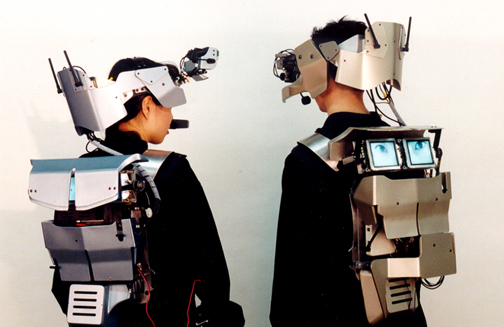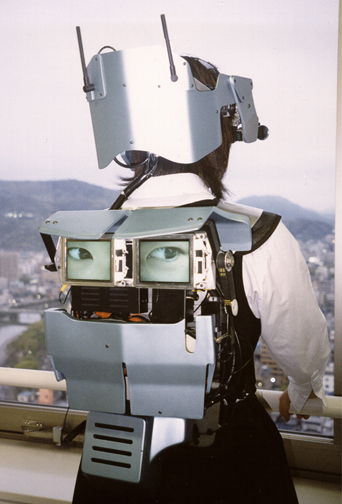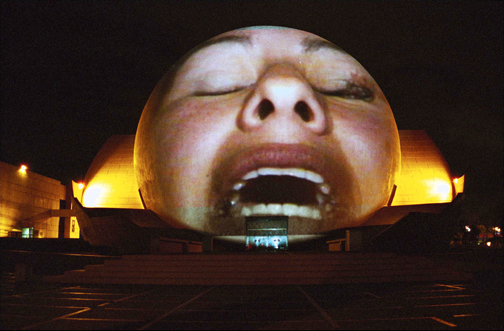







Krzysztof Wodiczko stayed at the JCVA in October, 2004. During his stay, Wodiczko worked intensively with the Israeli Center for Digital Arts, Holon, and began planning a large scale public art project under the center’s auspices. He traveled to Ramallah and East Jerusalem, where he was particularly engaged by Palestinian and Israeli artists who are attempting to build bridges between the two peoples.
Wodizco’s project, designed after talks and consultations with the local artists he met, would create a heightened communication event between Palestinian Jerusalemites and people in Tel Aviv, using the facade of Tel Aviv’s municipal building. On designated occasions, small screens covering some of the building’s windows would project two gigantic, real eyes – the living eyes of chosen young Jerusalemites. As the building’s facade turns into a monumental face, the young people will project their testimonies onto the square facing the municipality via special sound equipment. The preparation of these testimonies will include months of training in truth telling for the purpose of dialogue. This training is in itself a central element of the project. In response, the audience in the plaza will be able to respond to the Jerusalemites. The two-sided communication will be facilitated by specialized video and recording equipment, some produced for this very event. But it is the psychological preparation and set-up which will allow this encounter to produce a new kind of dialogue between the younger members of both nations.
Dis-Armor, commissioned by the Hiroshima City Museum of Contemporary Art in 1999, is an interactive project with high-school students from Hiroshima. One in a series of psychocultural prosthetics and communication equipment for the alienated, traumatized, and silenced residents of today's cities, Dis-Armor is an instrument designed for Japanese high school students and "school refusers," who live in silence and lack facial expression.
Dis-Armor offers users the opportunity to speak through their backs by virtue of LCD screens, worn on the back, which display live images of the wearer's eyes transmitted from cameras installed in the helmet covering the face. A speaker positioned below the LCD screens amplifies the user's voice. Supporting equipment permits the user to see and hear the spectator/interlocutor standing behind him or her.
Specifically, Dis-Armor uses ancient Japanese traditions of arms making to conceive of a playful alternative to intimidating face-to-face communication. It is designed for those urban youth who have survived overwhelming life events (violence, neglect, and abuse) and who now wish to overcome their false sense of shame, to break their silence, and to communicate their experience in public space. The work connects contemporary research in two fields: wearable communication technology and prosthetics. In doing so, it counters the dichotomy of the present explosion in communication technology and rampant cultural miscommunication.
The Dis-Armor instruments are part of the permanent collection of the Hiroshima City Museum of Contemporary Art in Hiroshima, Japan, and can be viewed on-line. Dis-Armor is an on-going project, and in 2004 was exhibited in MASS MoCA, the Massachusetts Museum of Contemporary Art.